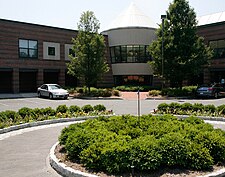medicine encyclopedia----Healthcare real estate
medical encyclopedia
Healthcare real estate



Healthcare real estate,Overview
Healthcare real estate is a niche market within the larger real estate market. Healthcare real estate or "Medical real estate" describes buildings, offices, and campuses leased to members or organizations within the healthcare community, but owned and operated by third party groups. There is a rising trend among hospitals, health care systems, and medical practitioners to embrace third party ownership and management of real estate. By using third party developers, they can preserve their capital resources for acute care needs and focus their attention on helping people, while passing on responsibility of building regulation and maintenance minutiae.
Healthcare facilities have detailed technological and regulatory requirements. Even such building maintenance tasks as cleaning, heating and cooling are done differently in health care, with demanding sterilization and filtration needs. In addition to outsourcing building and management tasks,
From an investor viewpoint, healthcare REIT's as a group generally trade at a premium yield to other REIT categories. It is also considered one of the more stable sectors, along with higher education and government. During times of economic decline, health care real estate continues to grow.
In 2008, several factors converged to drive healthcare real estate:
- An aging population that requires ever more medical services: As of 2004, there were 36.3 million people in America 65 and older, accounting for 12% of total population. US Census projects there will be 86.7 million people 65 and older by 2050, comprising 21% of the total population.
- Advances in technology that allow increasing numbers of medical procedures to be done in offices outside of a hospital setting
- Tight medical office markets in many areas as little new construction came on line for several years
- Rapid population growth in some areas that has outstripped the supply of medical offices
- Increasing interest from investors looking to take advantage of high lease rates and a generally stable physician tenant base.







Aucun commentaire:
Enregistrer un commentaire